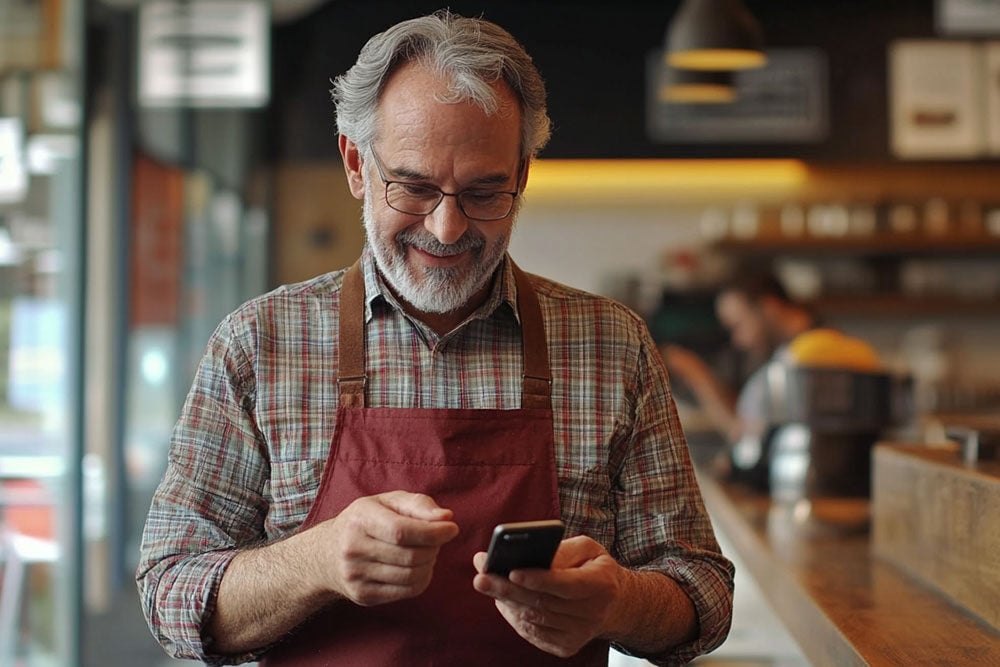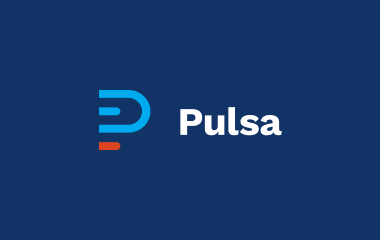INSIGHTS
Getting More Out Of Pulsa

- Insights
- How To Choose CO2 Tank Monitoring And Measuring Systems For Restaurants
How To Choose CO2 Tank Monitoring And Measuring Systems For Restaurants
CO2 tank management is often overlooked in a busy restaurant. Yet, it plays a key role in keeping operations smooth. A sudden dip in CO2 tank levels might seem like a minor issue, but it can quickly snowball into lost sales, frustrated customers, and even safety concerns.
Despite its low profile, investing in a reliable CO2 tank monitoring system for restaurants can provide significant benefits—keeping drinks flowing, preventing costly downtime, and ensuring the safety of staff and customers. When overlooked, it can cause disruptions, but proper management offers peace of mind and smooth operations.
Why CO2 Tank Monitoring Matters in Restaurants
CO2 is integral to restaurant functions relying on soda and draft beverage systems. When CO2 levels are mismanaged or a tank runs dry, the consequences can be immediate. Beverage services might stop, causing delays and harming the restaurant’s reputation. Beyond the inconvenience of running out of CO2, safety is also a major concern. Leaks of CO2 in enclosed spaces can pose health risks to staff and customers, making it imperative to monitor tank levels and the surrounding environment.
Choosing a CO2 tank monitoring system ensures that restaurant owners always know the status of their CO2 supply. A good system will offer automatic monitoring, real-time alerts, and accurate measurements, preventing interruptions and maintaining consistent service. Pulsa CO2 Guard is an excellent example of a solution that provides real-time data on tank levels and ensures businesses can avoid running out of CO2. Our system is also integrated with third-party devices, such as CO2 atmospheric monitoring devices which can deliver atmospheric level data into the Pulsa Dashboard. Additionally, the user can set alerts if the levels become too high.
Real-time Monitoring and Alerts
A key feature of any CO2 monitoring system for restaurants is real-time data reporting. Systems that provide continuous monitoring of CO2 tank levels allow for better decision-making. When CO2 levels drop to critical levels, the system immediately alerts the restaurant manager or office management staff through SMS notifications and/or emails. This enables them to act before service is affected. This feature minimizes downtime and ensures that CO2 tanks are managed efficiently.
Modern systems use wireless sensors connected to cloud-based platforms for remote monitoring. This is quite useful for restaurant managers who may not always be on-site. Mobile notifications and web dashboards enable the monitoring of CO2 levels across locations, ensuring consistency and safety.
Safety Compliance and Environmental Monitoring
While CO2 leaks are rare, they can pose serious risks if they occur, especially within confined spaces. When a CO2 leak happens the level of CO2 will decrease in a tank. The user can set alerts if the tank level decreases by a certain amount over a short time. This would indicate a fast leak. By reviewing data over time, a slower leak can be detected. In the case of a faster leak, elevated CO2 levels in the air can reduce oxygen in the area. This may cause symptoms such as dizziness, headaches, and, in severe cases, unconsciousness. Operations managers connect their CO2 monitoring devices to their CO2 tank monitoring system, alerting staff of the amount of CO2 in the air.
When selecting a system, opt for one with sensors specifically designed to measure the amount of CO2 in a tank and one that connects with a CO2 monitoring device that detects CO2 concentrations around the tank. These systems will trigger alarms if a leak is detected, allowing staff to take prompt action. A monitoring system that combines tank-level management with leak detection ensures both operational safety and protection for employees and your facility.
Installation and Ease of Use
Ease of installation is a key factor when choosing a CO2 tank monitoring system. Pulsa CO2 monitoring systems can be installed in minutes with wireless sensors that don’t require rewiring or structural changes—ideal for busy restaurant environments where disruptions must be minimal.
Once installed, the user-friendly Pulsa interface allows staff to easily view tank levels, set alert thresholds, set up alerts, and manage multiple tanks from different locations via one convenient platform. Management staff are typically trained to operate the system, then it’s a “set it and forget it” situation. You’ll only get alerts when needed. The training is quick and straightforward. After the onboarding process, staff members can focus on customer service instead of equipment management.
Long-term Cost Efficiency
Although there’s an upfront cost, the long-term savings of a CO2 monitoring system like Pulsa are substantial. Running out of CO2 results in costly emergency deliveries or a complete shutdown of beverage services during peak hours. With Pulsa's accurate monitoring and alerts, restaurant owners can optimize CO2 usage and schedule refills only when needed, avoiding unnecessary costs.
The Pulsa system also provides data analytics on CO2 usage, helping restaurants forecast their needs more accurately. This prevents over-ordering or underestimating CO2 requirements, leading to precise inventory management and reduced waste. In the short-term, Pulsa pays for itself through efficient resource use and fewer service disruptions.
Durability and Reliability
Due to the busy restaurant environment, invest in a durable CO2 monitoring system that withstands daily wear and tear. Choose systems designed for restaurants that come with a robust warranty or support package.
A reliable system should consistently provide accurate and timely readings. Pulsa provides readings every three minutes whereas others in the market provide them 1-2 times per day. Restaurant owners should look for trusted brands with proven track records in the industry. A system that’s prone to errors or frequent breakdowns can end up causing more headaches than it solves, so it’s necessary to choose one with a strong reputation for reliability.
Customization and Scalability
Every restaurant’s CO2 needs are different, and a one-size-fits-all approach may not work. Some businesses may only need a single CO2 tank monitored, while others might have multiple tanks spread across several locations. When choosing a CO2 monitoring system, look for one that offers customization options based on your specific requirements.
Consider scalability, as growing restaurants may need to add tanks or manage CO2 across locations. A flexible monitoring system will allow for easy expansion without requiring a complete overhaul of the existing setup. Systems that integrate with other restaurant management tools can further streamline operations and provide a holistic view of resource usage.
With Pulsa, restaurant operators can choose from a range of solutions based on their needs. For example, a new restaurant could add a Pulsa Industrial scale. It is easy to lift an empty tank onto it. A scale is a precise way of measuring liquid CO2 inventory. If a restaurant owner already has a measurement system (e.g., a Chart Wika gauge) on several tanks, they just need to add the Pulsa Link. It allows for measurements from third-party devices to be brought into one convenient Dashboard. Pulsa has Liquid Level sensors, pressure sensors, and more. A Pulsa representative will assess your tank and provide recommendations that match your needs.
Remote Access and Cloud-based Features
One of the most valuable features of modern CO2 tank monitoring systems is the ability to manage them remotely. Cloud-based platforms enable restaurant managers to access real-time data from any location using their smartphone, tablet, or computer. This kind of remote access is immensely helpful for multi-location restaurants or franchises, allowing centralized control over CO2 supplies.
Remote management capabilities also enhance responsiveness. When alerts are sent instantly via SMS or email, managers can take immediate action, even if they aren’t physically at the restaurant. This minimizes delays in addressing potential issues and ensures that CO2 tank levels remain consistent across all locations.
Customer Support and Warranty
Consider the level of customer support offered by the provider. A system with excellent technical support ensures that any issues are resolved quickly, minimizing downtime. It’s worth checking the warranty and after-sales service before purchasing to ensure that any faults or malfunctions are covered.
A company with a dedicated support team can guide restaurant owners through installation, troubleshoot any issues, and provide ongoing maintenance as needed. In addition to technical support, many providers offer training resources to help staff maximize the system’s capabilities.
Pulsa CO2 Guard: The Reliable Way to Manage Your Restaurant’s CO2 Tank Levels
Running a successful restaurant involves managing countless details, from staff and inventory to customer service and safety protocols. Amid all this, CO2 tank management can easily slip under the radar, but overlooking it can lead to significant disruptions. Imagine running out of CO2 during peak hours—beverages stop flowing, customers become frustrated, and sales are lost. A reliable CO2 tank monitoring and measuring system ensures that your restaurant stays operational, safe, and efficient, giving you one less thing to worry about.
Pulsa CO2 Guard is the all-in-one solution for restaurants, providing real-time monitoring, instant alerts, and complete control over your CO2 supply. Trusted by top brands like McDonald's, Taco Bell, and Wendy's, our system ensures you never run out of CO2 during peak hours, keeping your operations smooth and efficient.
With sensors that deliver updates every three minutes, Pulsa’s easy-to-install system is designed for reliability, safety, and cost efficiency. Manage your CO2 levels from any device—phone, tablet, or desktop—and enjoy peace of mind knowing you’re always in control. Book a demo with us today and experience the difference Pulsa CO2 Guard can make!




